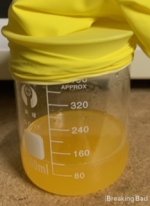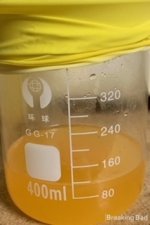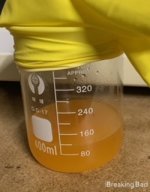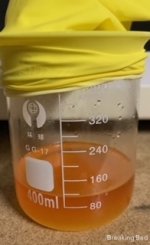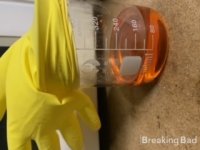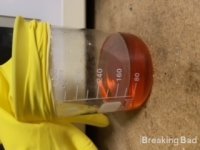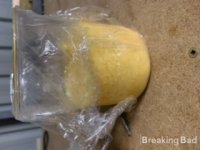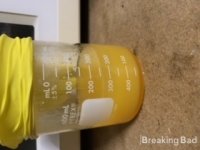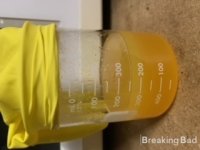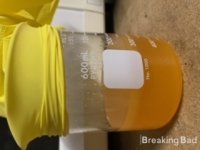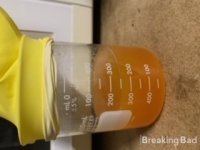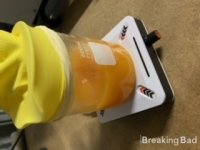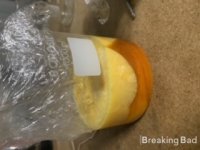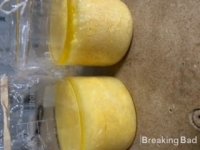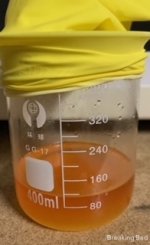- Language
- 🇺🇸
- Joined
- Apr 16, 2023
- Messages
- 178
- Reaction score
- 114
- Points
- 43
Alguém experimentou essa receita exata recentemente? Sei que Jesse_pinkman_ tentou há alguns anos. Mas depois ele entrou em uma tangente com o gálio...
Gostaria muito de ouvir algumas experiências, lições, dicas, ajustes ou truques? Desde já agradeço a todos.
Escala (pequena) de micro-ondas:
1. Benzaldeído 100 ml, nitroetano 100 ml, ácido acético glacial 25 ml e n-butilamina 20 ml são colocados em um béquer de 500 ml.
2. Uma luva de borracha é colocada no béquer.
3. O béquer é colocado em um forno de micro-ondas.
4. A potência do forno de micro-ondas é ajustada para 750 W. O forno é ligado e a mistura é aquecida até a ebulição. A mistura é resfriada até a temperatura ambiente.
5. A etapa 4 é repetida várias vezes. No mínimo 6 vezes.
6. Em seguida, adiciona-se 100 ml de IPA, a mistura de reação é agitada e colocada em um freezer por 12 horas. O 1-fenil-2-nitropropeno(P2NP) é cristalizado.
7. O produto P2NP é filtrado em um funil de Buchner(procedimento de filtração por sucção), lavado com uma pequena quantidade de IPA frio e seco ao ar (ou em câmara de vácuo, opcional).
Gostaria muito de ouvir algumas experiências, lições, dicas, ajustes ou truques? Desde já agradeço a todos.
Escala (pequena) de micro-ondas:
1. Benzaldeído 100 ml, nitroetano 100 ml, ácido acético glacial 25 ml e n-butilamina 20 ml são colocados em um béquer de 500 ml.
2. Uma luva de borracha é colocada no béquer.
3. O béquer é colocado em um forno de micro-ondas.
4. A potência do forno de micro-ondas é ajustada para 750 W. O forno é ligado e a mistura é aquecida até a ebulição. A mistura é resfriada até a temperatura ambiente.
5. A etapa 4 é repetida várias vezes. No mínimo 6 vezes.
6. Em seguida, adiciona-se 100 ml de IPA, a mistura de reação é agitada e colocada em um freezer por 12 horas. O 1-fenil-2-nitropropeno(P2NP) é cristalizado.
7. O produto P2NP é filtrado em um funil de Buchner(procedimento de filtração por sucção), lavado com uma pequena quantidade de IPA frio e seco ao ar (ou em câmara de vácuo, opcional).

